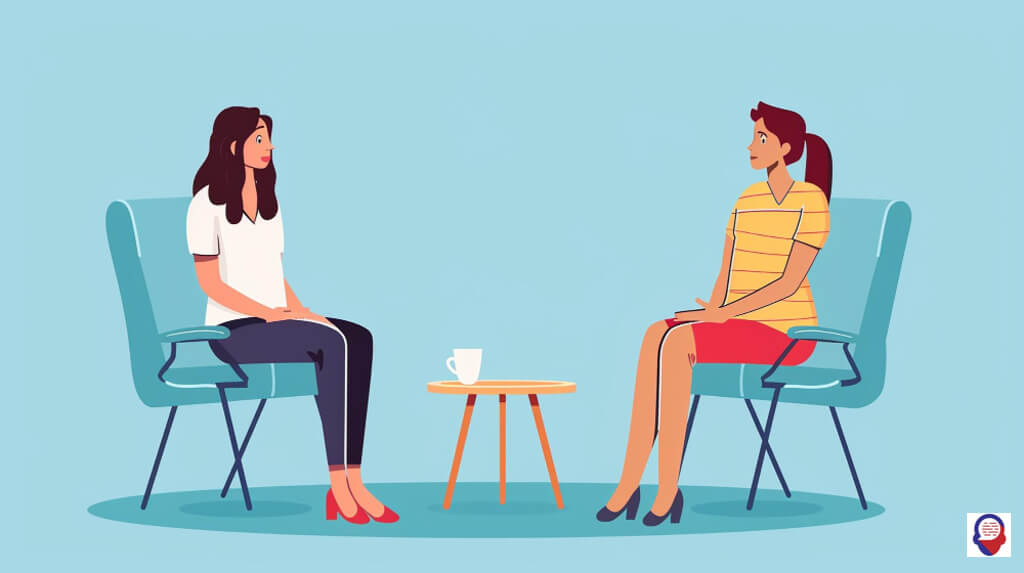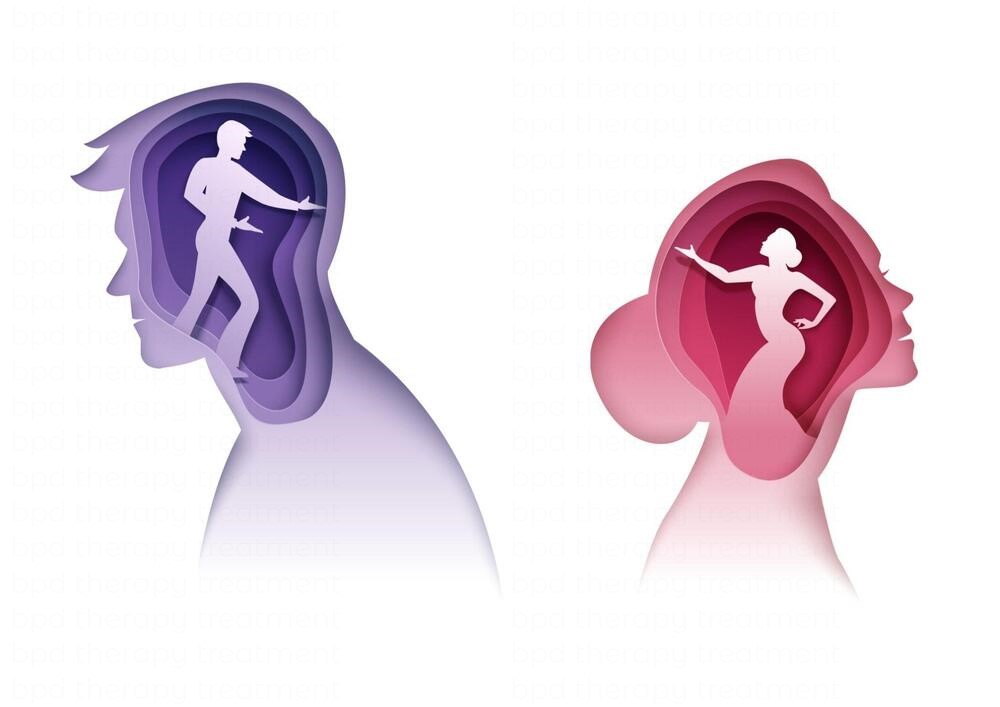Breaking the Cycle: A Guide to Behavioural Depression
When we think of depression, our minds often jump to feelings of sadness, a fog of negative thoughts, or a profound sense of emptiness. These are, without question, central pillars of the experience. But what if a crucial part of the puzzle lies not just in what we think or feel, but in what we do, or more accurately, what we stop doing? This is the core idea behind the behavioural model of depression, a powerful lens that reframes our understanding of this complex condition. It suggests that depression isn’t just something that happens to us, it’s something we can become entangled in through our actions and routines.
This perspective doesn’t dismiss the very real pain of emotional and cognitive symptoms. Instead, it offers a tangible, action-oriented path forward. It shifts the focus from the impossible task of simply "thinking" your way out of depression to the manageable goal of "acting" your way toward recovery. By understanding how our behaviours and our mood are locked in a feedback loop, we can find the keys to unlock it, one small, intentional action at a time.

What is the Behavioural Model of Depression?
The behavioural model proposes that depression is often triggered and maintained by a loss of positive reinforcement from the environment. In simple terms, when we stop engaging in activities that give us a sense of pleasure, achievement, or connection, our world shrinks, and our mood plummets. It’s a theory rooted in the observable, focusing on the powerful link between our actions and our emotional state.
Imagine your well-being as a plant. To thrive, it needs sunlight, water, and nutrients. For humans, these essential ingredients come from our daily activities, our hobbies, our work, and our relationships. When depression begins to take hold, we might feel too tired or unmotivated to "water the plant". We pull back from friends, we drop hobbies, we struggle with daily tasks. As a result, we receive less and less of the "good stuff" that life has to offer, and the plant of our well-being begins to wither. This creates a vicious cycle, the less we do, the worse we feel, and the worse we feel, the less we are able to do.

How Does Inactivity Lead to Depression?
Inactivity leads to depression by systematically starving us of the experiences that are fundamental to psychological health. When we withdraw from life, we cut off our supply of positive rewards, social connection, and opportunities for mastery, creating a vacuum that depression readily fills.
This isn’t just a matter of feeling bored. A lack of engagement has profound consequences. It erodes our self-confidence, confirming the depressive thought that we are incapable. It isolates us, making us feel alone in our struggle. And it creates a state of inertia that becomes increasingly difficult to overcome, solidifying the patterns that keep us stuck.

What is the Role of Positive Reinforcement?
Positive reinforcement is any consequence of an action that makes you more likely to do that action again in the future. It’s the feeling of satisfaction after cleaning a room, the warmth of a friend’s laughter during a phone call, or the simple pleasure of tasting a good cup of coffee. These are the natural rewards that fuel our motivation and sustain our mood.
When we are depressed, our ability to access these rewards diminishes significantly. We may stop doing the things that once brought us joy, or the depression itself may numb our ability to feel pleasure from them, a symptom known as anhedonia. The behavioural model argues that by consciously and strategically reintroducing these reinforcing activities into our lives, even if they don’t feel good at first, we can begin to reverse-engineer the cycle of depression. The action itself becomes the catalyst for change, slowly rebuilding the pathways to feeling good again.

Can Avoidance Make Depression Worse?
Yes, avoidance is a powerful engine that drives and deepens depression. While avoiding a difficult task or a stressful social situation might provide a fleeting moment of relief, it reinforces the depression in the long run by strengthening the belief that you cannot cope and shrinking your world.
Each time you avoid something, you send a message to your brain: "That was dangerous, and I was right to stay away." This makes the avoided situation seem even more intimidating the next time. Over time, a life governed by avoidance becomes a very small life, devoid of the challenges and connections that create meaning and resilience. It is the behavioural equivalent of hiding from a monster that only grows larger in the dark.

What Are the Key Signs of Behavioural Depression?
The key signs are a marked withdrawal from activities you once enjoyed, a pattern of social isolation, and a pervasive lack of motivation to engage with even basic daily tasks. These behavioural changes are not just symptoms of depression, they are active ingredients that maintain and worsen it.
You might notice a friend who used to love hiking now never leaves the house, or a family member who was once the life of the party now declines every invitation. Other signs include a significant drop in work or academic performance, neglecting personal hygiene and self-care, and spending excessive amounts of time in passive, low-reward activities like scrolling on a phone or watching television without any real enjoyment. These actions, or lack thereof, paint a clear picture of a life that has lost its sources of positive reinforcement.

Is Procrastination a Symptom?
Yes, chronic and debilitating procrastination, especially concerning tasks that are important for your well-being or align with your values, is a classic behavioural symptom of depression. It goes far beyond simply putting things off, it becomes a paralyzing state of inaction.
Depression makes tasks feel monumental and overwhelming. The energy required to even start seems unavailable. This leads to a cycle of procrastination, which then triggers feelings of guilt, shame, and anxiety. These negative feelings, in turn, drain your energy further, making it even harder to start the task. It’s a self-perpetuating loop where the avoidance of a task becomes more painful than the task itself.

How Does It Affect Daily Routines?
It profoundly disrupts daily routines, dismantling the very structures that support our mental and physical health. This breakdown often manifests in chaotic sleep schedules, poor nutrition, and a general neglect of the basic rhythms of life.
A stable routine provides a sense of predictability and control, which is incredibly grounding when your internal world feels chaotic. Depression attacks this foundation. Sleep can become erratic, with individuals either sleeping excessively (hypersomnia) or struggling with insomnia. Regular meals may be replaced by sporadic snacking or a complete loss of appetite. The simple, structuring acts of showering, getting dressed, and tidying up can feel like climbing a mountain, leading to a breakdown in the daily patterns that keep us anchored.

How Can You Break the Vicious Cycle?
You can break the cycle by deliberately and strategically re-engaging with the world, even when you have zero motivation to do so. The primary strategy for achieving this is a powerful therapeutic technique known as Behavioural Activation, which operates on the principle of "action before motivation."
The core idea is to stop waiting for the mood to lift or for motivation to strike. Instead, you act first. You commit to engaging in specific, planned activities, treating them like a prescription for your brain. The goal is to externally generate positive reinforcement by interacting with your environment, which then kickstarts the internal engine of mood and motivation. You act your way into feeling better, rather than waiting to feel better before you act.

What is Behavioural Activation?
Behavioural Activation, or BA, is a structured and evidence-based psychotherapy that helps people overcome depression by methodically increasing their engagement in activities that are rewarding or meaningful. It’s a practical, hands-on approach that empowers individuals to change their behaviour in order to change their mood.
BA is not about simply "keeping busy." It’s a targeted intervention that involves identifying which activities are most likely to provide a sense of pleasure, mastery, or connection, and then systematically scheduling them into your life. It works by directly countering the withdrawal and avoidance that fuel depression, helping you to rebuild a life that is rich with positive experiences and aligned with your personal values.

How Do You Start with Behavioural Activation?
You begin the process by first becoming a detective of your own life, monitoring your daily activities and your corresponding moods to see the connection between them. This is followed by clarifying what truly matters to you, your values, and then building a gradual, step-by-step plan to schedule activities that align with those values.
The first step, activity monitoring, is crucial. For a week, you might keep a simple log of what you do each hour and rate your mood. This often reveals stark patterns, such as your mood being lowest when you are inactive. Next, you reflect on your values, what kind of person you want to be, and what areas of life (like relationships, health, or creativity) are important to you. Using this information, you create a hierarchy of activities, from very easy to more challenging, that you can begin to schedule into your week.

Why is Scheduling Activities So Important?
Scheduling activities is critical because it externalizes the decision-making process, bypassing the need for internal motivation, which is often absent in depression. By putting an activity in your calendar, you treat it as a non-negotiable appointment with your own well-being, increasing the likelihood that you will follow through.
When you’re depressed, your feelings can be a very unreliable guide for what to do. Your feelings will tell you to stay in bed, to isolate, to do nothing. Scheduling provides an external, logical structure to override these feelings. It creates a commitment. It’s not about "Do I feel like going for a walk?"; it’s about "My schedule says it’s time for my walk." This simple shift in framing can be the difference between remaining stuck and taking the first step toward recovery.

What Kinds of Activities Should You Choose?
You should choose a balanced diet of activities that fall into three key categories: pleasure, mastery, and values. A good plan incorporates a mix of all three, as they each provide a different, yet essential, psychological nutrient.
Pleasure activities are those that are simply enjoyable or fun, like listening to a favourite album, watching a comedy, or spending time in nature. Mastery activities provide a sense of accomplishment and competence, they can be as small as making your bed or as large as completing a work project. Values-based activities are those that connect you to what is most important to you, like calling a parent, volunteering, or engaging in a spiritual practice. Starting with small, manageable activities from each category is the key to building momentum.

What Challenges Might You Face?
The most common challenges you will face are a deep-seated lack of energy and motivation, feeling completely overwhelmed by the plan you’ve created, and not feeling an immediate mood boost after completing a scheduled activity. These hurdles are a normal part of the process and can be overcome with the right strategies.
Depression is a powerful force, and it will fight back against your efforts to change. It will whisper that it’s pointless, that you’re too tired, that nothing will work. Anticipating these challenges is the first step to overcoming them. It’s important to remember that progress is not linear, there will be good days and bad days, and the goal is consistent effort, not immediate perfection.

What If You Have No Motivation at All?
When you feel you have absolutely zero motivation, the key is to shrink the goal until it becomes almost laughably easy. Break the desired action down into its smallest possible component and focus only on completing that tiny first step.
If the goal is to go for a walk, don’t think about the walk. Just focus on putting on your socks. Once that’s done, focus only on putting on your shoes. Then, just stand up. The goal is to break the powerful inertia of inaction. Often, initiating the very first, smallest part of a behaviour is the hardest part. Once you’re in motion, it’s much easier to stay in motion. This is not about finding motivation, it’s about generating momentum.

What If You Don’t Enjoy the Activities?
It is completely normal and expected not to enjoy activities at first, especially if you are experiencing anhedonia, the inability to feel pleasure. The initial goal is not to feel good, but simply to do the thing you planned to do and to credit yourself for the act of doing it.
Think of it like physical therapy after an injury. The first few movements are often stiff and painful. You don’t expect them to feel good, you do them because you know they are necessary for healing. Behavioural Activation works the same way. You are rehabilitating your brain’s reward system. Trust in the process. By consistently engaging in these behaviours, you are slowly, gradually, re-teaching your brain how to experience pleasure and satisfaction. The feeling will follow the action, but it often takes time and repetition.
Frequently Asked Questions

Is this the same as ‘faking it till you make it’?
No, it is fundamentally different. ‘Faking it’ implies pretending to have feelings you don’t, which can feel inauthentic and exhausting. Behavioural Activation is about acting in accordance with your chosen values and goals, regardless of how you feel. It’s about authenticity to your deeper self, not faking a mood. You can acknowledge "I feel terrible right now, and I am choosing to call my friend because connection is important to me."

Can Behavioural Activation work on its own?
For many people, particularly those with mild to moderate depression, Behavioural Activation can be a highly effective standalone treatment. Its focus on practical, tangible change can create significant and lasting improvements in mood and functioning. For more severe or complex cases of depression, it is often used as a core component of a broader treatment plan, which might include other forms of therapy, like Cognitive Behavioural Therapy (CBT), or medication.

How long does it take to see results?
While some people may notice small shifts in energy or mood relatively quickly after starting, significant and stable improvement typically requires consistent effort over several weeks to a few months. The key is consistency. It’s the cumulative effect of many small, positive actions that gradually rewires your brain and rebuilds a rewarding life. Patience and persistence are your greatest allies in this process.

Do I need a therapist to do this?
While the principles of Behavioural Activation are straightforward and you can certainly begin applying them on your own, working with a therapist can make the process significantly more effective. A therapist provides expert guidance, helps you troubleshoot challenges, offers accountability, and provides a crucial source of support and encouragement when your own motivation falters. They can help you tailor the approach specifically to your situation, ensuring you build a plan that is both realistic and powerful.
Taking the first step, no matter how small, is an act of profound courage. The journey out of the fog of depression often begins not with a grand epiphany, but with a single, intentional action. It might be putting on your shoes, making a cup of tea, or stepping outside for just one minute. These are the building blocks of recovery.
At Counselling-uk, we understand that life’s challenges can feel overwhelming, and taking that first step can be the hardest part. We are here to provide a safe, confidential, and professional space where you can find the support you need. Our dedicated therapists can guide you through processes like Behavioural Activation, helping you build the skills and resilience to reclaim your life, one action at a time. You don’t have to do this alone. When you’re ready, we’re here to help you find your way forward.



